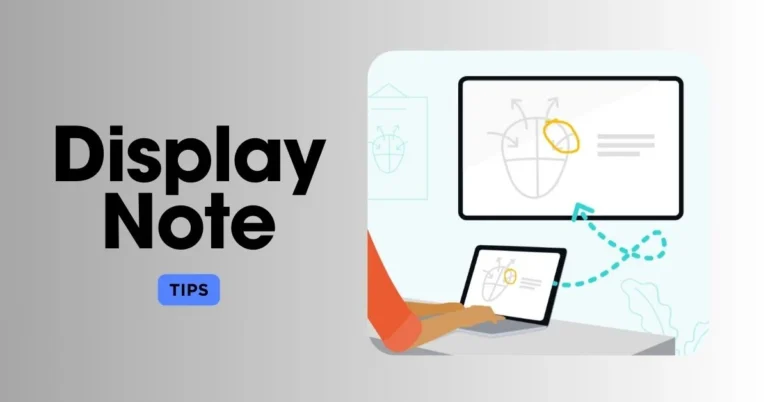The Rise of Digital Platforms: How Technology is Shaping Modern Entertainment
The entertainment industry has experienced a profound transformation due to rapid advancements in digital technology. These changes have revolutionized the way stories are crafted, how audiences interact with content, and the methods by which media is distributed. Personalized streaming services and immersive gaming experiences now dominate the landscape, offering tailored and engaging options for consumers. The traditional boundaries of entertainment have been redefined, giving rise to more dynamic, on-demand, and interactive formats. As digital platforms continue to expand and integrate new technologies, their influence grows stronger, continuously reshaping the structure and direction of the industry. This evolution marks a new era in how entertainment is created and experienced.
From Analog Roots to On-Demand Experiences
The shift from analog to digital marked a pivotal moment in entertainment history. Where once audiences relied on vinyl records, VHS tapes, or broadcast television, today’s consumers access content on demand through a tap or click. Digital platforms have replaced physical formats, giving rise to seamless experiences that are accessible anytime, anywhere.
This evolution has democratized access. Media is no longer bound by geography or schedule. Instead, it’s available in real time, on multiple devices, across global networks. For creators, this means wider reach with lower distribution costs. For audiences, it means choice and convenience without compromise.
Digital production tools, including CGI and motion capture, have elevated the quality and creativity of content. Stories can now be told with a level of visual precision and scale that analog technologies simply couldn’t support. These innovations have elevated media experiences, expanding creative possibilities like never before.
The Streaming Paradigm and Viewer Empowerment
Streaming has restructured traditional entertainment hierarchies. Audiences no longer rely on broadcast schedules or physical media libraries. Instead, recommendation engines guide users through endless catalogs tailored to their preferences. This personalization has changed what viewers expect—not just from content, but from the platforms that deliver it.
Streaming has also influenced production. With digital-first strategies, content creators design shows for binge-watching, shorter episodes, and global appeal. The shift has redefined pacing, narrative structure, and even performance metrics, which now hinge on watch-time data rather than ratings alone.
The digital distribution model offers creators greater freedom and direct access to viewers. However, it also introduces new challenges: managing algorithmic visibility, combating content saturation, and sustaining revenue in a subscription-driven economy.
Gaming and the New Digital Frontier
Gaming has rapidly grown from a hobby into a dominant form of entertainment. The rise of esports and live-streamed gameplay has opened new arenas of engagement. Platforms like FanDuel have further expanded the interactive experience, enabling real-time interaction, global competitions, and multimillion-dollar prize pools, elevating players to celebrity status.
Technological advancements such as virtual reality and cloud gaming are further transforming the experience. Gamers are no longer confined by hardware limitations or static gameplay. Instead, they can step into immersive environments, customize their journeys, and interact with other players across the globe.
These digital ecosystems foster community and creativity. Players build worlds, form alliances, and share content—blurring the lines between consumer and creator. As the industry continues to expand, gaming remains a major force in shaping the future of interactive entertainment.
Music in the Age of Streaming
Music consumption has shifted dramatically from physical albums to digital streaming. The convenience of instant access to millions of tracks has changed how people discover, share, and experience music. This transition has altered revenue models, moving artists toward performance-based and streaming royalties.
For musicians, digital tools now facilitate production, promotion, and distribution. A track can be recorded at home, uploaded within hours, and reach listeners worldwide. This direct-to-audience model empowers emerging artists but also heightens competition for visibility.
Streaming’s influence extends beyond access—it impacts how music is structured. Shorter tracks, quick hooks, and algorithm-friendly formats have become the norm, as creators adapt to audience habits shaped by technology.
Live Entertainment’s Digital Reinvention
Live events—once confined to physical venues—are increasingly enhanced or replaced by digital alternatives. Concerts, theater, and festivals now reach global audiences through live streams, virtual stages, and augmented reality. This shift makes performances more accessible while preserving the thrill of shared experience.
Visual effects, digital backdrops, and synchronized lighting systems elevate live productions, offering richer, more dynamic presentations. Virtual reality adds another dimension, placing viewers in the heart of the performance, no matter their location.
Yet, the integration of technology brings tension between innovation and authenticity. While immersive, some argue digital enhancements dilute the spontaneity and rawness that define live art. Still, the digital evolution of performance continues, expanding what is possible on stage and screen alike.
The Drawbacks of Digital Immersion
With increased access comes a new concern: technology overuse. Excessive screen time has been linked to various health and social challenges. Headaches, sleep disturbances, and heightened stress are increasingly associated with prolonged digital engagement. Younger users are especially vulnerable, as developing brains adapt to overstimulation.
The entertainment industry faces a responsibility to balance innovation with well-being. Creators and platforms must consider how to foster healthy habits while delivering engaging experiences. This balance is key to sustaining long-term audience trust and satisfaction.
Adapting to a Rapidly Changing Industry
Technology evolves faster than many industries can adapt. Entertainment is no exception. Content creators, platforms, and producers must continuously innovate to meet shifting consumer expectations. This includes leveraging emerging tools like artificial intelligence to personalize content recommendations and streamline production workflows.
Machine learning enables dynamic storytelling, helping predict what viewers want before they search. It also improves visual effects and enhances user experience through smarter interfaces and voice control. These capabilities increase efficiency, but they also raise ethical concerns around privacy and content manipulation.
In a fast-changing digital landscape, adaptability is essential. Success hinges on the ability to pivot quickly, deliver personalized experiences, and meet shifting expectations with precision.
What Lies Ahead
The future of entertainment is defined by integration. Technologies like extended reality, AI, and blockchain are converging to create hybrid experiences—from metaverse concerts to interactive, AI-driven content and digital ownership models. These innovations are reshaping value through engagement, creativity, and cultural relevance. As boundaries between platforms and formats blur, entertainment is being redefined—and those who innovate while preserving human connection will lead the way..
ALSO READ: Improving Efficiency: The Workflow of a Lead Retrieval App







